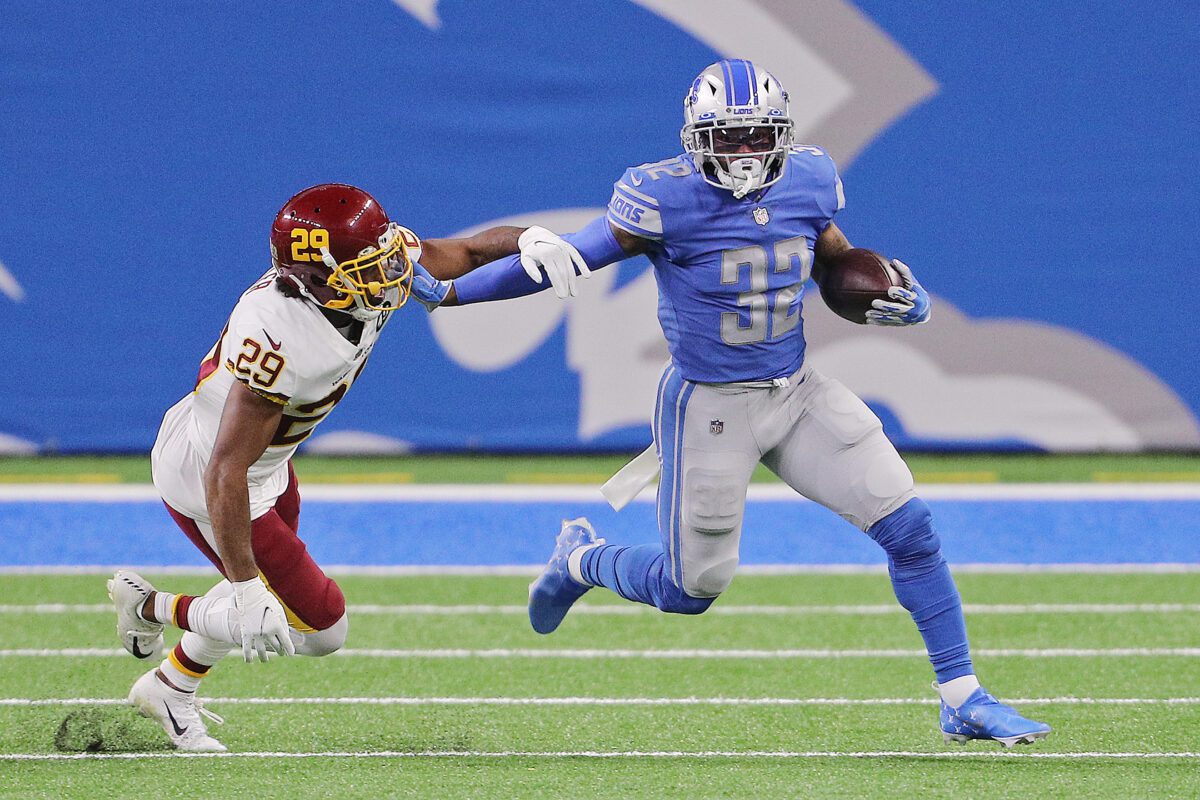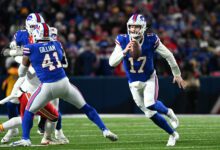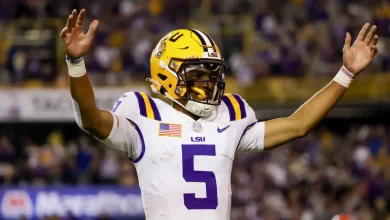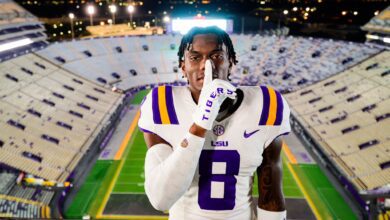
The running back battles are very much fantasy football relevant. They matter for fantasy purposes, even when the league seemingly devalues the position. Whether your draft strategy is to stack up on the three to five running backs who are tier one or zero running back strategy, they will be needed. Running back battles will impact your fantasy football fortunes regardless of your strategy.
There are a few teams that use a primary running back, and then there are teams that use running-backs-by-committee. There are running backs that will be more valuable to the PPR crowd. And then there is the dreaded aforementioned running-backs-by-committee group where all you have to do is decide which running back will be the goal-line guy and who is the three-down power-back, especially if you are in a standard league.
Here are three teams whose running back hierarchy will impact your fantasy football fortunes.
Chicago Bears Running Back Battle
Last season the Bears were third in rushing attempts per game (32.8), first in rushing percentage per game (56.19%), and first in rushing yards per game (177.3). The only “problem” was that quarterback Justin Fields was the leader in all the rushing categories. He led the team in rushing yards (1143), average yards per attempt (7.1), and rushing touchdowns (8).

Preseason game one is a very small sample. Fields wasn’t even in the rushing stats. He was three-for-three in pass attempts.
The rushing leader was rookie Roschon Johnson leading the running backs with 12 carries, 44 yards, with a long run of 24 yards. Travis Homer had six carries, 25 yards, with a long run of six. And Khalil Herbert had four carries for 15 yards, with his long run being 11 yards.
Khalil Herbert
Herbert finished as RB43 in PPR leagues and RB37 in standard leagues last year. He is the 107th player off the boards and the 35th running back. In this running back battle, Herbert is the preemptive best fantasy option in this backfield.
Last season Herbert led all running backs in yards per attempt with 5.7. He ranked seventh in juke rate despite running behind the 21st run-blocking unit. Herbert had 21 carries of 10 yards or more. Head coach Matt Eberflus on what he likes about Herbert, “Just his ability to hit the home run. He’s got great vision, and he’s got great cutback ability. He can take the ball outside and bounce it outside, but he’s really good at cutting it back when it’s there.”
Statistically, Herbert had 129 carries, 731 yards, and four touchdowns last year. He only had 12 targets and nine receptions. Herbert isn’t going to be a threat in the receiving game, and he isn’t a goal-line threat. But his fantasy value is in his ability to have 5.7 yards per attempt and the volume he could have.
D’Onta Foreman
Love our content? Check out the GoingFor2 Live Podcast Network!
The Houston Texans selected Foreman out of the University of Texas in the third round of the 2017 NFL Draft.
Foreman is a power back. He has been in the league for six years but only played 43 games. His 336 carries in the last two seasons were 229 more than in his first four years.
Next Gen Stats tracked him as facing one of the highest percentages of eight-man boxes in the last two years. Last season they tracked him as spending the fifth least amount of time behind the line of scrimmage on runs at 2.64 seconds.
Foreman isn’t the back that is in for passing downs. He has only been targeted 31 times in his career. Of those 31 targets, he has 23 receptions. He has, however, averaged 11.5 yards per catch exclusively on-screen passes.
Last season Foreman had 213 carries for 914 yards and five touchdowns. He averaged 4.5 yards per carry. Foreman also had nine targets, five receptions, and 26 receiving yards.
In the first preseason games, Foreman carried the ball three times for nine yards.
Roschon Johnson
In the Bears’ first preseason game, Johnson was on the field for 50% of the offensive snaps. He led the Bears in rushing attempts (12) and rushing yards (44), and he also led the Bears with three receptions, for two yards.
Not going to lie; I was tempted to make the analysis on Johnson simply all tweets.
Louis Riddick on Roschon Johnson in pass pro. 🐻🔥 pic.twitter.com/1SkXaD0LkU
— Matt Clapp (@DaBearNecess) April 29, 2023
The 115th overall pick in the 2023 NFL Draft is consistently considered the “sleeper pick” for fantasy managers. However, if you listen to GoingFor2.com’s analyst @jamieperog Johnson is the real deal (heck, @jamieperog even drafted him in the first round in the Scott Fishbowl 13)!
In Johnson’s last season at the University of Texas, he had 93 carries for 554 yards, 14 receptions, 128 receiving yards, and six total touchdowns. He averaged 4.28 yards per attempt after contact, and 71.9% of his yards came after contact.
Last season the Bears’ running backs were responsible for 368 carries and a 17.2% target share. Departed David Montgomery had 235 of those carries. Those touches must go somewhere, and the rookie is making his claim.
New York Jets Running Back Battle
Embed from Getty ImagesThe Jets’ backfield just got a little more interesting, even if our fantasy football impact became more frustrating.
Per Ourlads.com the current depth chart for the Jets backfield is Breece Hall, Dalvin Cook, and Michael Carter. Hall suffered an ACL injury in October of last season. Cook signed a one-year contract with the Jets Monday, August 14th. The Jets activated Hall from the physically unable to perform list Tuesday, August 15th.
There is also a new offensive coordinator, Nathaniel Hackett. And in case you haven’t heard, a new quarterback.
Per Pro Football Focus, last year, the new quarterback Aaron Rodgers threw to the running back position 19.9% of the time. No quarterback had a higher passer rating when targeting running backs than Rodgers.
The expected frequency of 2023 targets for Hall is 28.8%. Cook’s expected target frequency for 2023 is 11.9%, partly because Kirk Cousins only threw to the running back position 10.4%.
So, whoever becomes the lead back for the Jets will have an increase in targets. That’s important because the Jets were 27th in rushing attempts (23.8) and 25th in rushing yards (99.2) last season. Those numbers do not have fantasy football positive impact written on them.
Breece Hall
Hall injured his ACL in October of last season. Before the injury, he was elite. (To ask any injury-related questions, hit up @TFSDoc on Twitter. He, too, is elite). Hall played in seven games. He had 56.9% of the running back touches in the six games before the injury. In Weeks 4-6, he was at 67%.
Hall averaged 5.8 yards per carry with 463 yards on 80 carries. He also had four rushing touchdowns. In the passing game, he had a 34.4% target rate per route run, with 19 receptions, 218 receiving yards, and one receiving touchdown.
The obvious question surrounding Hall is how he will rebound after the injury. With Cook on the team, will the Jets take it slow on getting Hall back on the field?
Hall is currently fifth in odds for winning Comeback Player of the Year at +2500. Of course, everyone is chasing Damar Hamlin at -285. It would be very difficult to bet against that.
Dalvin Cook
In fantasy circles, Cook receives a fair amount of capital on his name. Cook is coming off post-season shoulder surgery. There is also a domestic incident from 2020 that needs to be resolved.
On the field last season Cook finished 42nd in yards created per touch (2.40), 15th in evaded tackles (62), 15th in breakaway runs (12), and last in expected points added (-53.0). Even though he was fifth in opportunity share (74.6%), ninth in weighted opportunities (246.3), and fifth in red zone touches (48).
If we gaze into the rather hazy crystal ball, the signing of Cook is a fuzzy signal that the Jets are okay with bringing Hall along slowly. Hall being worked in slowly works for Cook’s volume, but the main beneficiary of the signing of Cook may be neither Cook nor Hall but the Jets’ passing game.
Michael Carter
The forgotten man in this menage a trois is Carter. There is good reason. Hall outplayed Carter in Carter’s second season. After Hall went down, Carter lost the starting position to Zonovan “Bam” Knight.
With the signing of Cook, Carter went from second on the depth chart to a ‘maybe’ third/fourth depending on Knight. But really, after Hall and Cook, there is no advantage to drafting another Jets running back.
Schedule
The Jets’ first six games before their Week 7 bye is brutal.
Their first six games include three teams in the top seventh for the fewest points allowed. The other three were in the top 20.
The teams and their 2022 rankings:
| Teams | Points Allowed | Ranking | Changes |
| Buffalo Bills | 19.1 | 4th | Head Coach is now also DC |
| @Dallas Cowboys | 19.7 | 6th | None on defense |
| New England Patriots | 20.4 | 11th | None on defense |
| Kansas City Chiefs | 22.2 | 18th | Reigning SB Champs |
| @Denver Broncos | 21.1 | 12th | New Head Coach/New DC |
| Philadelphia Eagles | 19.8 | 7th | New DC, New Secondary |
Philadelphia Eagles Running Back Battle
Last season the Eagles were first in rushing attempts per game (33.2) and fourth in rushing yards per game (152.0). Their leading rusher was Miles Sanders. Sanders had 259 carries and 1269 rushing yards. Sander is gone. That left open the fifth most vacated carries.
There is also a new offensive coordinator and two new running backs. The Eagles have made our fantasy options a bit more confusing.
D’Andre Swift
The Lions drafted Swift 35th overall in the 2020 NFL Draft out of Georgia. He has played in a total of 40 games since then. For 39% of his NFL career, he has either missed a game or come into a game injured.
The Eagles’ backfield is loaded, albeit with some players with injury issues. Which brings us to the question what if Swift is there to be the pass-catching running back only? A rotation in Philadelphia (to keep their running backs healthy) where each has his specialty. For Swift, that would be in the passing game. Last season he had 26.7% targets on his routes run.
Over the past two seasons, Swift has averaged 5.1 targets and 4.1 receptions per game (fourth-ranked). Ordinarily, that would be a reason for optimism, except that quarterback Jalen Hurts targeted running backs on only 11.5% of attempts, 29th in the league. And with A.J. Brown, DeVonta Smith, and Dallas Goedert still, around, there is no reason to suddenly start targeting the running backs.
Then some think he will benefit from Sander’s 259 rushing attempts left behind. In his career, the most rushing attempts Swift has had was 151, and that was in his rookie year. With Rashaad Penny, Kenneth Gainwell, and Boston Scott in the running back room, the thought that Swift would suddenly revert to carrying the ball 100 times more than ever is wishful thinking.
Rashaad Penny
Penny is another back the Eagles retained who has a troubled injury history. After being drafted in the first round by the Seattle Seahawks in the 2018 NFL Draft, Penny has only played 18 games over the last three years. Last season he played in five games before exiting with a tibia fracture.
There is no question that Penny’s ceiling is high if he stays healthy. In Seattle, behind an offensive line that ranked 25th (in 2021) and 27th (in 2022), Penny finished fifth and 19th in between-the-tackles yards per carry and fifth and first in shotgun formation yards per carry.
Over the last two seasons, no running back has converted a higher percentage of runs into big plays. Last season Penny ranked second among all running backs with a 17.5% rushing percentage in 10+ yards. He averaged 6.1 yards per carry.
Of his 14 career touchdowns, 11 have been for 10 yards or more. Seven of the 11 were from 30 yards or more plays from scrimmage.
So, what if Penny is only in Philadelphia to be the early down back? He isn’t a threat in the receiving game. In his five seasons, he has played 42 games. Penny has only recorded 27 receptions in those 42 games.
Is it out of the question that the Eagles have acquired game-specific specialists and will use them sparingly to keep both healthy for a full season? But where does that leave Kenneth Gainwell?
Kenneth Gainwell
Gainwell was on the field for 28.07% of the offensive snaps last season. He had a 19.1% opportunity share with 53 carries, 29 targets, and 18 red zone touches.
From week 15 through the rest of the season, Gainwell out-targeted Sanders 18 to five. In the last four games, their carries were almost identical, with Gainwell having 41 carries and Sanders 46.
Let’s pretend we are in a perfect world where Penny and Swift stay healthy for a full season. Gainwell appears to be more of a threat to Swift’s ceiling. But we know the world is not perfect, so Gainwell will be around to be the next man up for whoever falters.
The Schedule
Last season the Eagles’ regular season schedule was the easiest, with opponents winning percentage of .474. They were ahead by halftime in most of their games. Per Sharp Analysis, the Eagles scored in 63.2% of their opening drives. They had a 63.3% pass rate on the first drive. For the remainder of the game, it dropped to 48.1%. Hurts attempted 293 passes in the first half of the games and 167 in the second half.
This year the Eagles have the hardest strength of schedule. Their opponents’ win percentage is .566. The run-heavy offense they employed in the second half of games last year might not come to fruition this year. If they find themselves behind or in closer contests, look for Hurts passing percentage to even out and the run game to regress.
ATTN Dynasty Commissioners: Do you want to do something cool for your league? How about a 1-hour live show dedicated to YOUR league? Team-by-team breakdowns, rankings, and more. For details and to book a show, visit: GoingFor2.com/plp.





